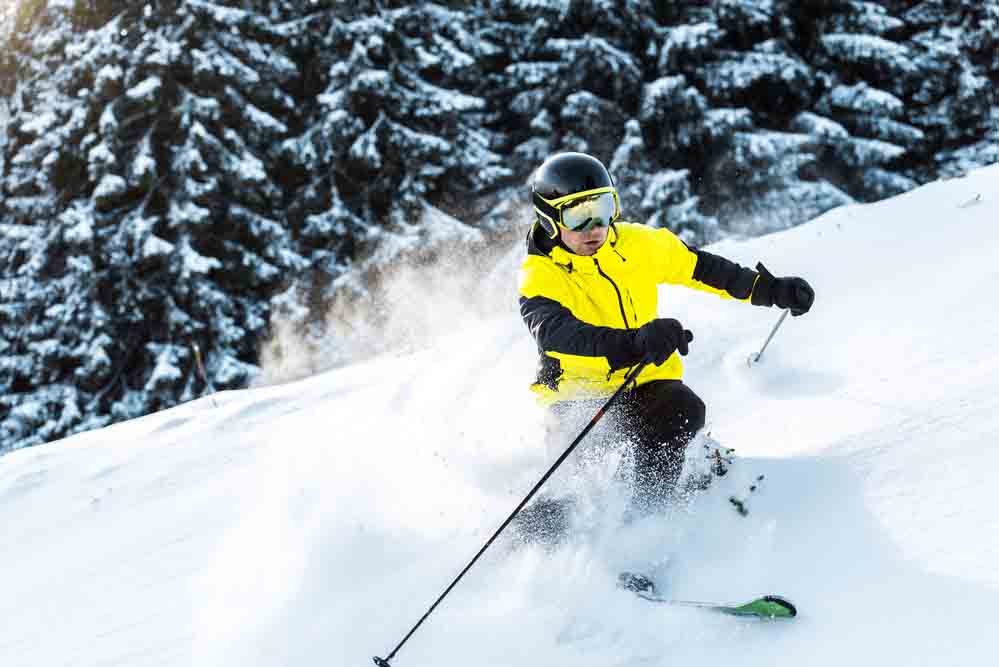Georgia Personal Training is Atlanta’s Elite Personal Training Center
Georgia Personal Training is the most elite Personal Training Center in the city of Atlanta. Our diverse training programs and talented instructors make for a unique and best in class training experience for all of our customers. We have a diverse clientele. From older adults looking for routines to help with balance and joint strength to talented young school athletes looking to up their game. We improve the physical fitness of all our customers and have routines for just about every situation.
 Annually, families plan trips to the snowy slopes across the country. It made me think that before anyone decides to go snow skiing or snowboarding, they might want to make sure their bodies have been conditioned for the challenges and stresses that snow skiing puts on the human body. Like most sports, if you jump in full force before your muscles and joints are conditioned, you will most likely suffer an injury. Although with snow skiing or snowboarding the chances probably go up exponentially regardless of your conditioning. The professionals at Georgia Personal Training are skilled at athlete specific training and are able to prepare clients for their specific sport.
Annually, families plan trips to the snowy slopes across the country. It made me think that before anyone decides to go snow skiing or snowboarding, they might want to make sure their bodies have been conditioned for the challenges and stresses that snow skiing puts on the human body. Like most sports, if you jump in full force before your muscles and joints are conditioned, you will most likely suffer an injury. Although with snow skiing or snowboarding the chances probably go up exponentially regardless of your conditioning. The professionals at Georgia Personal Training are skilled at athlete specific training and are able to prepare clients for their specific sport.
Thinking about the specific muscles used in snow skiing, there is not a large difference from other sports. For example, lunges and squats are instrumental for skiing just as they are for countless other sports. Georgia Personal Training specializes in numerous aspects of conditioning and for sure leg strength and agility is high on the list. Then there is the need for strong core muscles when you are snowboarding. Very few sports allow for a weak core. Naturally a strong lower back is needed to support the forward leaning required in winter sports. So, as you start to compare winter sports with other sports, it is easy to see the correlation.
Georgia Personal Training Offers Athlete Specific Training
Below our owner and certified trainer, Matt Lein, discusses vital muscle groups and how Georgia Personal Training can help.
Plyometric Training has been shown to be one of the most effective training modalities for athletes to develop both speed and explosive power. Plyometrics refers to exercises that require a muscle to exert maximum force in the shortest possible time. In plyometric movements the muscle is loaded with an eccentric (lengthening) action, followed immediately by a very short transition phase (amortization), and then a rapid concentric (shortening) contraction. This process is called the stretch shortening cycle or SSC.
A muscle has much of the same properties as a rubber band. When muscle is stretched prior to contraction, it creates stored elastic energy and will then contract more forcefully and rapidly than it would from a static state. There is also a process that occurs when a sudden rapid stretch is detected in the muscles in which an involuntary protective response will initiate to prevent injury. This involuntary response is referred to as the “stretch reflex”. Both the elastic component of muscle and the stretch reflex are believed to be the driving forces behind the increased rate of force production during plyometric exercises.
So how do plyometrics build power and speed for athletes?
Plyometrics help increase the body’s ability to rapidly contract the muscles and create maximum power output in the shortest possible time. Simply put, they are the key to increasing one’s ability to generate force very fast. Creating maximum force is what we as athletes are striving for. Whether it’s exit velocity off the bat, the force of a punch or tackle, the velocity of a pitch or tennis serve, etc. Maximum force is the objective of any athlete.
Force = Mass x Acceleration. Most trainers focus primarily on the mass part of that equation. In doing so they are not achieving optimal results for their athletes and could in fact be harming them. If strength training is done in a manner that reduces speed, causes imbalances, breaks down technique, or causes limited range of motion it is actually reducing an athlete’s ability to generate force. Simply put, they may be squatting heavy, but their velocity is dropping, and their 60 times are increasing rather than decreasing.This is why plyometrics are so beneficial. They address both strength and speed simultaneously while also improving balance, range of motion, agility, and neurological response. Examples of plyometric movements would be squat jumps, box jumps, depth jumps, ski jumps, medicine ball slams, rotational throws, etc. There is a plethora of dynamic plyometric movements that can be utilized for both the lower and upper body to create the most explosive, powerful athlete possible. At GPT, we try to incorporate plyometric movements into every single training session. Our objective is to create home runs, velocity, and stolen bases, not deadlift and squat PRs.
Georgia Personal Training
9420 Willeo Road Suite 106 Roswell, GA 30075
Matt Lein (770) 241-1086 MatthewLein@Bellsouth.net
Brandi Lein (404) 668-7976 BrandiLeinFit@gmail.com


